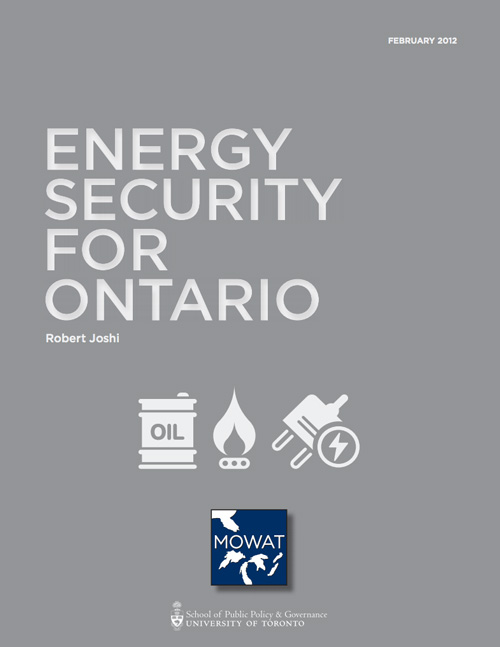February 7, 2012
Ontario’s energy security policy is comprised of three distinct policies covering oil, electricity and natural gas. Ontario’s security policy is minimalist for oil, being left to markets and emergency planning; but more interventionist for electricity, with self-sufficiency favoured as an inherently worthwhile policy objective. The third area is Ontario’s approach to natural gas security, which includes clearer governance and accountability structures and an explicit consideration of security of supply and how best to achieve it.
Three distinct approaches for the different energy sources may be the best approach when arrived at deliberately and with a common set of transparent assumptions. However, there is little justification or policy rationale for many provinces’ commitment to self-sufficiency in electricity but not in other areas of energy. Policy-makers should consider all of the various energy options open to them and assess each in regards to the three key criteria that should be used when making energy policy decisions: security of supply, cost and environmental footprint.
Executive Summary
Canadian firms are regularly outperformed in terms of innovation. This is now conventional wisdom and governments have invested significant funds trying to remedy this failing with little impact. This paper argues that Canadian federalism is at least part of the problem. In light of the impending release of the federal government’s Research and Development (R&D) Review Panel Report, a refocusing of our public investments is needed.
Government investment in innovation can be understood as either indirect or direct. Indirect investments focus on the framework conditions that enable innovation, including tax incentives, favourable tax rates, the regulatory environment, and support for research and post-secondary education. Direct supports include government programs that are generic (such as general support for commercialization), programs that focus on particular sectors (such as the Strategic Aerospace and Defence Initiative), or programs that focus on particular firms. The latter investments are dismissed in some circles as “picking winners.”
The federal government makes enormous investments in indirect support for innovation, particularly through the Scientific Research and Experimental Development (SR&ED) Tax Incentive Program, which allows firms to write off part of their research costs. It represents a C$ 4.7 Billion federal tax expenditure.
Direct support to clusters, sectors, industries and firms can be found in hundreds of overlapping and confusing federal and provincial programs delivered by multiple departments with, at times, contradictory and/or overlapping objectives. The result is confusing to industry.
Continue reading
This paper finds that Canada is an extreme outlier in weighting its investment in innovation so heavily toward tax incentives and away from direct support to sectors. This paper argues that these funds would be better used for direct supports to the innovation process and would produce more value-added, world-leading, commercialized products and services.
It also argues for a clearer division of policy roles whereby the federal government confines its support to maintaining the indirect and generic support for the innovation process, while provincial governments focus primarily on strategic investments. This refocusing would significantly simplify the program landscape and ensure greater emphasis is placed on direct investments that align with provincial strategic innovation objectives.








